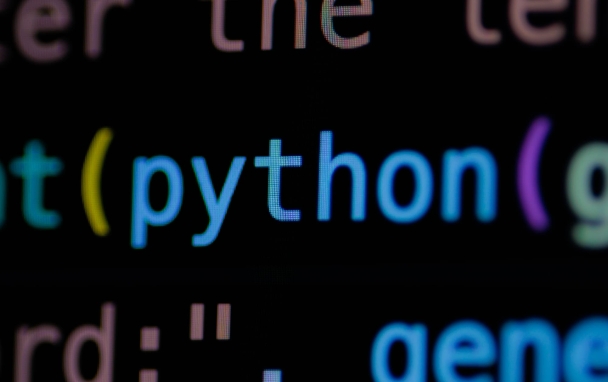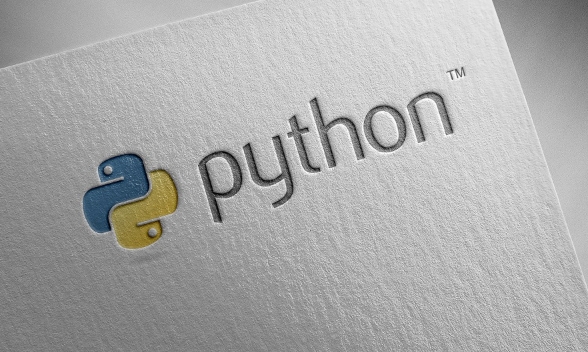The Pandas library is very powerful in Python data processing, especially when manipulating data frames. The summary is as follows: 1. Selecting and filtering data can be achieved through df['column_name'] or df[['col1','col2']], and row filtering is performed using conditional expressions such as df[df['age']>30] and logical operator combinations; 2. Missing value processing can be detected by df.isnull(), deleted by df.dropna() or filled by df.fillna(); 3. Sort and ranking support single column or multi-column sorting and add ascending parameters, and ranking is implemented through rank() function; 4. Groupby uses groupby to combine mean, sum and other functions to complete classification statistics, and agg can be used for multi-dimensional summary. Mastering these core operations will significantly improve data processing efficiency.

When you're working with data in Python, the Pandas library is one of the most powerful tools you can use — especially when it comes to manipulating data frames. Whether you're cleaning up messy data or preparing it for analysis, knowing how to effectively work with data frames will save you time and improve your results.

Selecting and Filtering Data
One of the most common tasks when working with data frames is selecting specific rows or columns. This helps you focus on relevant parts of the dataset without being overwhelmed by unnecessary information.

- Use
df['column_name']to select a single column. - Use
df[['col1', 'col2']]to select multiple columns. - To filter rows based on conditions, try something like
df[df['age'] > 30].
A helpful trick is combining multiple conditions using logical operators:
df[(df['age'] > 30) & (df['gender'] == 'Female')]
This returns only female users older than 30, which might be useful for targeted analysis.

Handling Missing Data
Missing values ??are a common issue in real-world datasets. If not handled properly, they can lead to incorrect conclusions or errors during computing.
Pandas makes it easy to detect and manage missing values:
- Check for missing values ??with
df.isnull(). - Count missing values ??per column using
df.isnull().sum(). - You can either drop rows with missing values ??(
df.dropna()) or fill them in (df.fillna(0)ordf.fillna(df.mean())).
Sometimes, filling missing values ??with the mean or median of the column is a good approach, especially if removing those rows would significantly reduce your dataset size.
Sorting and Ranking
Sorting data helps you understand patterns and spot outliers quickly. It's also often a necessary step before performing further operations like grouping or ranking.
You can sort a data frame by one or more columns:
- Use
df.sort_values(by='column_name')for sorting. - Add
ascending=Falseto sort from high to low. - For multi-column sorting:
df.sort_values(by=['col1', 'col2'], ascending=[True, False])
Ranking adds a new layer of insight by assigning positions to rows within a dataset or group:
df['rank'] = df['score'].rank(ascending=False)
This could help, for example, in identifying top-performing students in a class.
Grouping and Aggregating Data
Grouping allows you to analyze subsets of your data separately, which is extremely useful when comparing categories or summarizing large datasets.
Use groupby() followed by an aggregation function:
df.groupby('category')['sales'].mean()
That line gives you average sales per category.
You can also apply multiple aggregations at once:
-
df.groupby('category').agg({'sales': 'mean', 'profit': 'sum'})
If you're looking to do more advanced summaries, consider using pivot_table() or crosstab() for multidimensional views.
Basically that's it. Once you get comfortable with these core operations, manipulating data in Pandas becomes second nature — and that's when you start extracting real value from your data.
The above is the detailed content of Manipulating Data Frames with Python Pandas Library. For more information, please follow other related articles on the PHP Chinese website!

Hot AI Tools

Undress AI Tool
Undress images for free

Undresser.AI Undress
AI-powered app for creating realistic nude photos

AI Clothes Remover
Online AI tool for removing clothes from photos.

Clothoff.io
AI clothes remover

Video Face Swap
Swap faces in any video effortlessly with our completely free AI face swap tool!

Hot Article

Hot Tools

Notepad++7.3.1
Easy-to-use and free code editor

SublimeText3 Chinese version
Chinese version, very easy to use

Zend Studio 13.0.1
Powerful PHP integrated development environment

Dreamweaver CS6
Visual web development tools

SublimeText3 Mac version
God-level code editing software (SublimeText3)
 Polymorphism in python classes
Jul 05, 2025 am 02:58 AM
Polymorphism in python classes
Jul 05, 2025 am 02:58 AM
Polymorphism is a core concept in Python object-oriented programming, referring to "one interface, multiple implementations", allowing for unified processing of different types of objects. 1. Polymorphism is implemented through method rewriting. Subclasses can redefine parent class methods. For example, the spoke() method of Animal class has different implementations in Dog and Cat subclasses. 2. The practical uses of polymorphism include simplifying the code structure and enhancing scalability, such as calling the draw() method uniformly in the graphical drawing program, or handling the common behavior of different characters in game development. 3. Python implementation polymorphism needs to satisfy: the parent class defines a method, and the child class overrides the method, but does not require inheritance of the same parent class. As long as the object implements the same method, this is called the "duck type". 4. Things to note include the maintenance
 Explain Python generators and iterators.
Jul 05, 2025 am 02:55 AM
Explain Python generators and iterators.
Jul 05, 2025 am 02:55 AM
Iterators are objects that implement __iter__() and __next__() methods. The generator is a simplified version of iterators, which automatically implement these methods through the yield keyword. 1. The iterator returns an element every time he calls next() and throws a StopIteration exception when there are no more elements. 2. The generator uses function definition to generate data on demand, saving memory and supporting infinite sequences. 3. Use iterators when processing existing sets, use a generator when dynamically generating big data or lazy evaluation, such as loading line by line when reading large files. Note: Iterable objects such as lists are not iterators. They need to be recreated after the iterator reaches its end, and the generator can only traverse it once.
 How to handle API authentication in Python
Jul 13, 2025 am 02:22 AM
How to handle API authentication in Python
Jul 13, 2025 am 02:22 AM
The key to dealing with API authentication is to understand and use the authentication method correctly. 1. APIKey is the simplest authentication method, usually placed in the request header or URL parameters; 2. BasicAuth uses username and password for Base64 encoding transmission, which is suitable for internal systems; 3. OAuth2 needs to obtain the token first through client_id and client_secret, and then bring the BearerToken in the request header; 4. In order to deal with the token expiration, the token management class can be encapsulated and automatically refreshed the token; in short, selecting the appropriate method according to the document and safely storing the key information is the key.
 Explain Python assertions.
Jul 07, 2025 am 12:14 AM
Explain Python assertions.
Jul 07, 2025 am 12:14 AM
Assert is an assertion tool used in Python for debugging, and throws an AssertionError when the condition is not met. Its syntax is assert condition plus optional error information, which is suitable for internal logic verification such as parameter checking, status confirmation, etc., but cannot be used for security or user input checking, and should be used in conjunction with clear prompt information. It is only available for auxiliary debugging in the development stage rather than substituting exception handling.
 What are Python type hints?
Jul 07, 2025 am 02:55 AM
What are Python type hints?
Jul 07, 2025 am 02:55 AM
TypehintsinPythonsolvetheproblemofambiguityandpotentialbugsindynamicallytypedcodebyallowingdeveloperstospecifyexpectedtypes.Theyenhancereadability,enableearlybugdetection,andimprovetoolingsupport.Typehintsareaddedusingacolon(:)forvariablesandparamete
 How to iterate over two lists at once Python
Jul 09, 2025 am 01:13 AM
How to iterate over two lists at once Python
Jul 09, 2025 am 01:13 AM
A common method to traverse two lists simultaneously in Python is to use the zip() function, which will pair multiple lists in order and be the shortest; if the list length is inconsistent, you can use itertools.zip_longest() to be the longest and fill in the missing values; combined with enumerate(), you can get the index at the same time. 1.zip() is concise and practical, suitable for paired data iteration; 2.zip_longest() can fill in the default value when dealing with inconsistent lengths; 3.enumerate(zip()) can obtain indexes during traversal, meeting the needs of a variety of complex scenarios.
 What are python iterators?
Jul 08, 2025 am 02:56 AM
What are python iterators?
Jul 08, 2025 am 02:56 AM
InPython,iteratorsareobjectsthatallowloopingthroughcollectionsbyimplementing__iter__()and__next__().1)Iteratorsworkviatheiteratorprotocol,using__iter__()toreturntheiteratorand__next__()toretrievethenextitemuntilStopIterationisraised.2)Aniterable(like
 Python FastAPI tutorial
Jul 12, 2025 am 02:42 AM
Python FastAPI tutorial
Jul 12, 2025 am 02:42 AM
To create modern and efficient APIs using Python, FastAPI is recommended; it is based on standard Python type prompts and can automatically generate documents, with excellent performance. After installing FastAPI and ASGI server uvicorn, you can write interface code. By defining routes, writing processing functions, and returning data, APIs can be quickly built. FastAPI supports a variety of HTTP methods and provides automatically generated SwaggerUI and ReDoc documentation systems. URL parameters can be captured through path definition, while query parameters can be implemented by setting default values ??for function parameters. The rational use of Pydantic models can help improve development efficiency and accuracy.






